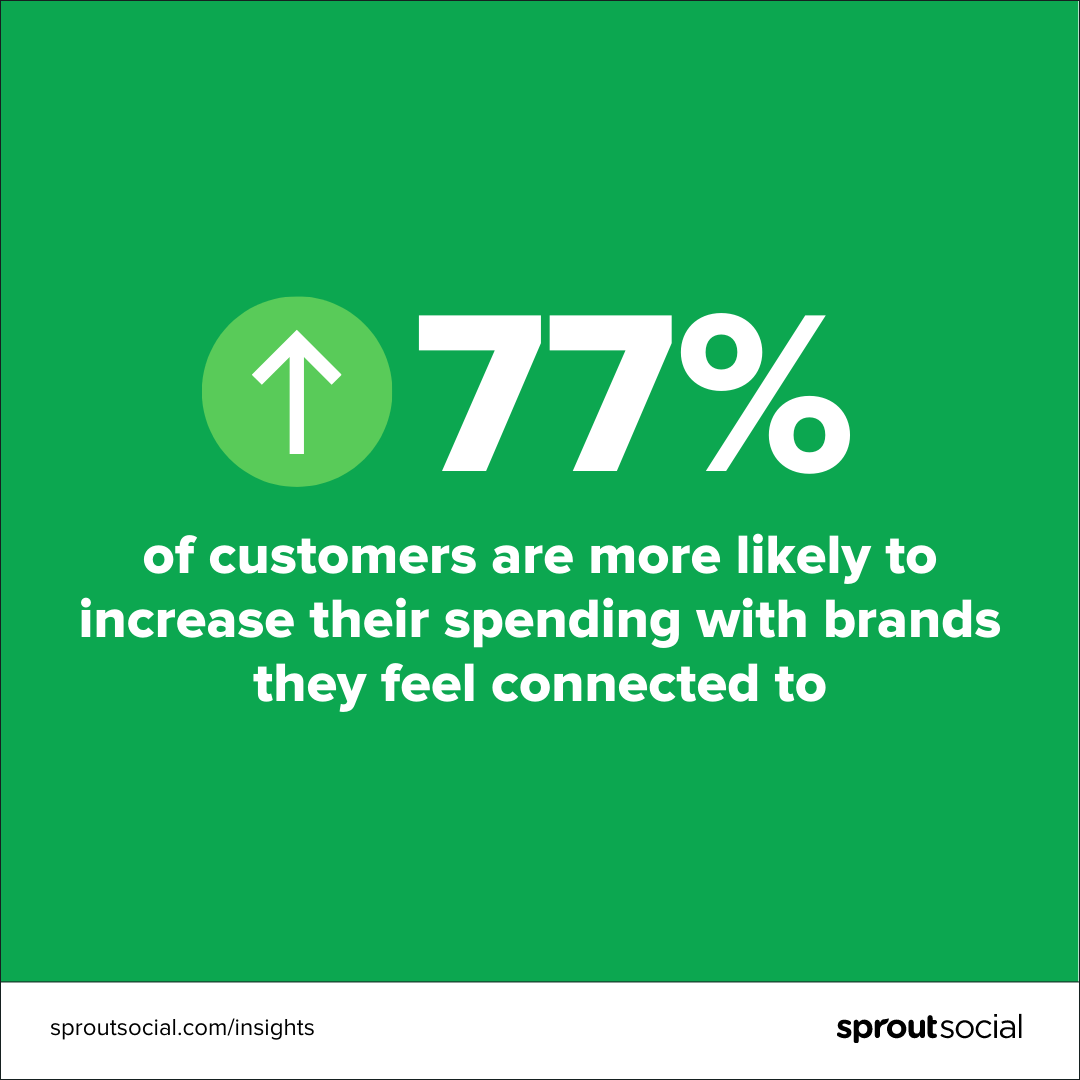Executing on a social media marketing strategy is like completing an obstacle course. In 2023, amidst recession talk, a cost of living crisis and a seemingly never-ending flood of layoff announcements, it feels a bit like the obstacle course is on fire.
If you’re feeling the heat, we see you and hear you. Managing social through down markets requires an additional layer of focus, rigor and empathy. It’s challenging to navigate, but possible with some extra preparation.
What does that preparation entail exactly? We tapped Carilu Dietrich to find out. Dietrich is a former CMO, most notably the head of marketing who took Atlassian public in 2015. Today, she advises several CEOs and CMOs as they navigate various phases of hypergrowth.
Keep reading to find out what you need to know to successfully navigate social media marketing through times of economic contraction.
- Why social media needs continued investment (even under economic pressure)
- How to make a case for social media investment in a down economy
- 4 ways to make the most of your current social media resources in a tight economy
Why social media needs continued investment (even under economic pressure)
Social media has revolutionized how businesses and consumers interact. Now, a brand’s relevance isn’t determined by how many storefronts they own or their presence at major conferences. Instead, it’s determined by their place in the greater cultural conversation.
“I don’t think of social as exclusively a brand or marketing activity,” says Dietrich. “It’s really a reflection of a full-funnel consumer experience.”
A strategic, social-first brand presence can serve as an entry point into the valuable conversations that are moving the needle for your brand. This ongoing consumer engagement allows brands to build connections and create fans at scale.
Those connections are worth their weight in gold, especially during economic turbulence. A Q1 ‘23 Sprout pulse survey found that 77% of consumers are more likely to spend more with brands they feel connected to, up from 57% in 2018.
Dietrich considers building this type of brand affinity to be a skill built over time. “The ability to activate on social is a critical muscle that companies need to exercise, even in times of economic pressure,” says Dietrich. “Today, “the people” control the message and the conversation. Brands need to engage in that dialogue to effectively provide service to their customers.”
Market shifts may tempt some to pump the brakes on brand marketing efforts, but that’s a risk you can’t afford to take. On social, the same tactics can only yield the same results for so long. The channel moves quickly, and marketers need to stay agile to move alongside it.
Social data is the key to strengthening your market position and future-proofing your brand. Cutting back on social media investment during an economic downturn gives your competitors room to swoop in and gain share of voice.
To put it simply, brands can’t afford to cut back on social.
How to make a case for social media investment in a down economy
“While most companies are cutting people and budgets, there is still money available for ideas and investments that can prove a return,” explains Dietrich. “The issue is that most teams want more funds to do what’s in their current plan.”
“To get more money, you need to deliver more than what’s already in your marketing plan. You need to be sharp on how, and bold on results you can deliver.”
You know why your brand needs to lean in on organic social. Now for the next task: Sharing your vision with the rest of your marketing leadership and executive teams. Follow these tips for success as you make your case for additional social media resources.
Zoom out
Under normal circumstances, requesting additional marketing resources would call for a clear pitch that explains the value for your team and overall strategy. This year, you’ll have to zoom out.
If you want to upgrade your toolkit or expand your team in 2023, your request should focus on how social can support your entire organization. The data and insights available through social media can—and should—change an entire business by giving them the cultural context they need to truly understand what their customers, employees and shareholders want.
To create an appeal that resonates, get acquainted with the goals of your cross-functional partners. How could an integrated social media management tool support your customer care efforts? How could social listening inform product development priorities?
Assess opportunities from all corners of your business to fortify your case.
Make it urgent
If you’re not involved in day-to-day social management, it can be easy to forget that the channel isn’t just for trends and memes. There are real risks that come with under-equipping a social media team. It’s your job to ensure your executive team is aware of that.
For example, suppose you’re lacking the tools or support needed to act on a social media crisis communication plan. In that case, you probably won’t be able to react as swiftly as consumers expect. More than 75% of consumers expect a response from brands in less than 24 hours.
If you don’t have what you need to get ahead of the issue before time runs out, you risk losing hard-earned fans.
Now that social has come into its own as a customer care channel, failing to respond to customers on time, even in non-crisis situations, is a risk in itself. When this happens, 36% of consumers say they’ll share that negative experience with friends and family. A comparable 31% won’t complete their purchase, and 30% will buy from a competitor.
Provide competitive context
So far, most of what we’ve covered is hypothetical. If you want to pull some of these insights into reality, you’ll need to provide the right context.
Conduct a social media competitive analysis to better understand your brand’s role in the current social media landscape. Dietrich believes that can serve as a blueprint for outpacing your competitors.
“Capitalizing on a competitive gap or shortcoming can be huge,” says Dietrich. “We may not get as much funding for social media this year, but it needs to remain strong enough to function through the downturn and seize on opportunity when the time is right.”
Understanding how your competitors use (or don’t use) social can unveil opportunities that are hidden in plain sight. Here are some questions to consider as you dig for competitive intel.
- What content formats (design, visual) are your competitors prioritizing? Based on their existing content, how would you rate their level of investment?
- How active are your competitor’s mentions, tags and comments? How often are they replying?
- What can you infer about their priorities based on their social content mix?
This context will help make the risks and benefits of your requested resource more tangible throughout the approval process.
4 ways to make the most of your current social media resources in a tight economy
Dietrich is no stranger to turbulent markets. She clearly remembers feeling frustrated in the face of budget cuts during the 2008 recession. “It’s hard to do more with less. It’s not like we’re all sitting around, spending money on things we know don’t work.”
If additional resources aren’t in the cards, don’t worry. There are still ways to optimize your social media operations to get the most out of what you have today. Here are some tips that will help you deliver results on a tight budget.
1. Audit team responsibilities
Many team rituals are maintained due to inertia instead of impact. If you haven’t taken time to review your team processes and responsibilities in the new year, now’s the time to do it.
Host candid conversations with your team about their bandwidth, routines and working styles. These talks will give you a better idea of how your team spends their time.
You may find that everyone can take a few hours back by swapping meetings for async stand-ups or rolling back an initiative that’s not driving clear results. Whatever the outcome, it will help ensure your team is on the same page, marching toward the same goal.
2. Focus your efforts
You won’t be able to do it all. The more comfortable you get with ruthless prioritization, the easier it will be to push back on competing priorities confidently.
For example, if you find that a specific network consistently underperforms compared to the rest of your brand accounts, now’s the time to put it into maintenance mode. Share posts and stay on top of customer care requests, but save big swings for networks with proven track records for engagement.
“They say ‘necessity is the mother of innovation,’” says Dietrich. “We need to experiment with different approaches this year. We need to keep experimenting in the current market if we are going to figure out how to get better results than our straight line budget cut would suggest.”
3. Build community
“It’s hard to get new customers in this market,” says Dietrich. “Our best chance at survival is through supporting and delighting the ideal customers within our existing contact lists. If we can keep them elated, we can ride on the wave of their word-of-mouth.”
This advice tracks with one of the biggest social trends we’ll continue to see in 2023—the popularity of closed communities. People are flocking to more intimate online destinations, pulling attention from some of the larger social media mainstays we know today.
Brands can lean into this by embracing social as a multi-way communication tool. Encourage conversations in the comments, keep community Facebook groups alive and active, and engage with accounts of all sizes.
Use community building as a way to create more value for your audience. This will keep your brand top of mind in crowded feeds.
4. Tighten market positioning with social data
Social data can illuminate customer experience improvements, product innovations and brand differentiation opportunities. It’s the north star that will help ground your strategy in the needs and motivations of your audience.
Your social listening tool can provide real-time insights into your brand and its competitive landscape. Use it to spark new marketing ideas that will help your brand stand out among the rest.
“Make your spending work harder by having more targeted, better content,” advises Dietrich. “A lot of messaging is ‘blah,’ but every now and then something really pierces through the noise and speaks to you. How can you create that for your company? How can you make your product critical in this current market?”
Social media is essential for growth-minded brands
Social can drive the brand loyalty needed to weather any storm, including choppy market conditions. Dietrich captures it well in just a few words: “It’s an investment in more good and less bad.”
Sprout Social CMO, Jamie Gilpin, has her own words of advice for marketing leaders boldly moving full steam ahead on big plans and bigger goals. Check out her recommended packing for your 2023 marketing journey today.
The post What marketers need to know about managing social media through an economic downturn appeared first on Sprout Social.




